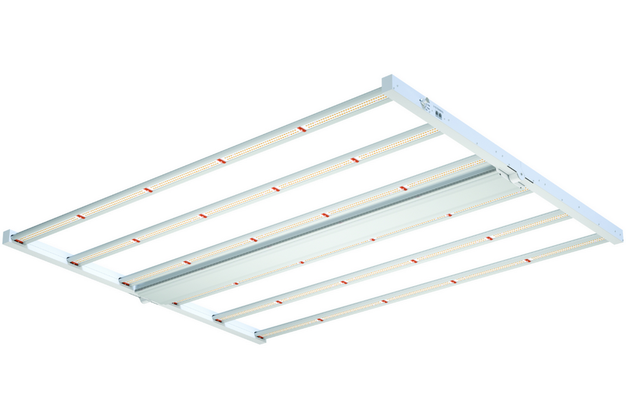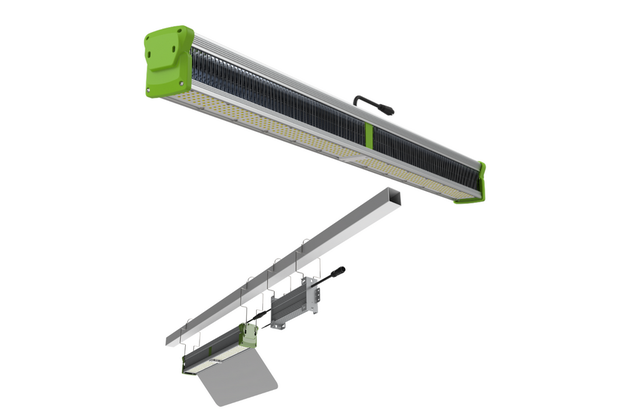Growers strive to provide their plants with the perfect amount of light. According to TotalGrow Lights, LED lights offer excellent control and efficiency, but the question arises: Is dimming necessary for optimal plant growth?
Understanding Daily Light Integral
At TotalGrow Lights, they believe that it's crucial to remember that the total amount of light plants receive over a 24-hour period, known as Daily Light Integral (DLI), is the key factor influencing growth. "Whether this DLI is managed through decreasing or increasing the hours of full-power light or dimming lights run for longer hours typically has a minimal difference. Plants are adept at adapting to fluctuations in light intensity throughout the day, as long as the overall DLI target is met. However, significant variations (e.g. more than 4 times the difference between bright and dark periods) can negatively affect light use efficiency."

When dimming becomes advantageous
While DLI remains the primary concern, dimming offers several advantages in specific scenarios, the Total Grow Light team explains: "Variable Sunlight: On moderately dark days, dimming allows you to supplement the natural light, ensuring plants receive the desired DLI without exceeding it. This is especially beneficial during transitional periods between seasons when natural light levels fluctuate significantly.
Light-Sensitive Growth Stages: Unrooted cuttings are susceptible to damage from excessive light. Dimming provides gentle light during this crucial stage, preventing photobleaching and promoting healthy root development.
Crop-Specific Requirements: Different plants have varying light requirements. For instance, shade-loving plants may thrive under lower light intensities compared to sun-loving crops, and lettuce needs far less light than tomatoes."

Factors to consider before dimming
They add that while dimming provides valuable benefits in certain situations, it's not a universally necessary feature. There are key factors to take into consideration.
"Light Intensity: If your grow setup relies primarily on natural sunlight with a relatively small amount of supplemental LED lighting, the additional benefit of dimming might be minimal. However, in setups with high supplemental lighting (e.g., cannabis or tomato growers, or very dark environments), the potential for precise light control through dimming becomes more significant. Even slight adjustments in light intensity can have a noticeable impact on plant growth and development, and the efficiency with which the plants can use more light.
Cost and Complexity: Dimming adds cost to your lighting system due to required data cables and potential adjustments to your environmental controller. Installation might require additional steps and may involve troubleshooting initial compatibility issues. The cost increase from adding dimming cables is typically around 3%.

On/Off Alternative: DLI and overall light use can be reduced by scheduled or automated turning off of lights, instead of dimming. Especially for less intense lighting setups, this can be a simpler approach with less cost.
Functionality: While dimming can turn lights completely off, a contactor that cuts power during dark hours remains advisable for the most robust and reliable scheduling. This ensures a complete blackout period for plants that require strict photoperiods, preventing accidental light exposure during the dark cycle."
Dimming is situational
The TotalGrow Lights team claims that dimming is a valuable tool in specific situations. This would be the case particularly when crops have varying light requirements throughout their growth cycle. Also when high-intensity supplemental lighting is used, precise control over light intensity is more critical. As well as when specific growth stages necessitate lower light intensities, such as during the rooting phase of cuttings, they state.
"Power limitations might necessitate dimming in situations where other equipment competes for electricity. Furthermore, dimming lights during peak power consumption periods can help manage overall energy usage within your facility.
Existing environmental control systems may be more easily integrated with an automated on/off control approach guided by a light sensor, i.e. bright sunlight makes the LEDs turn off and low natural light levels make the LEDs turn back on to 100%. For less intense LED lighting installations, this on/off fluctuation is a moderate enough swing in total intensity received by the plants to be perfectly adequate. By understanding the nuances of DLI, the specific advantages of dimming, and the associated considerations, you can make informed decisions about optimizing light delivery for your plants."

TotalGrow highlights that they offer a range of dimmable LED grow lights and environmental controllers, and are happy to assist you in determining the best approach for your specific grow environment, considering factors like the number of lights, wiring runs, and controller compatibility to ensure a smooth and efficient implementation.
For more information:
Jeff Mastin![]()
TotalGrow Lights
totalgrowlight.com
[email protected]
